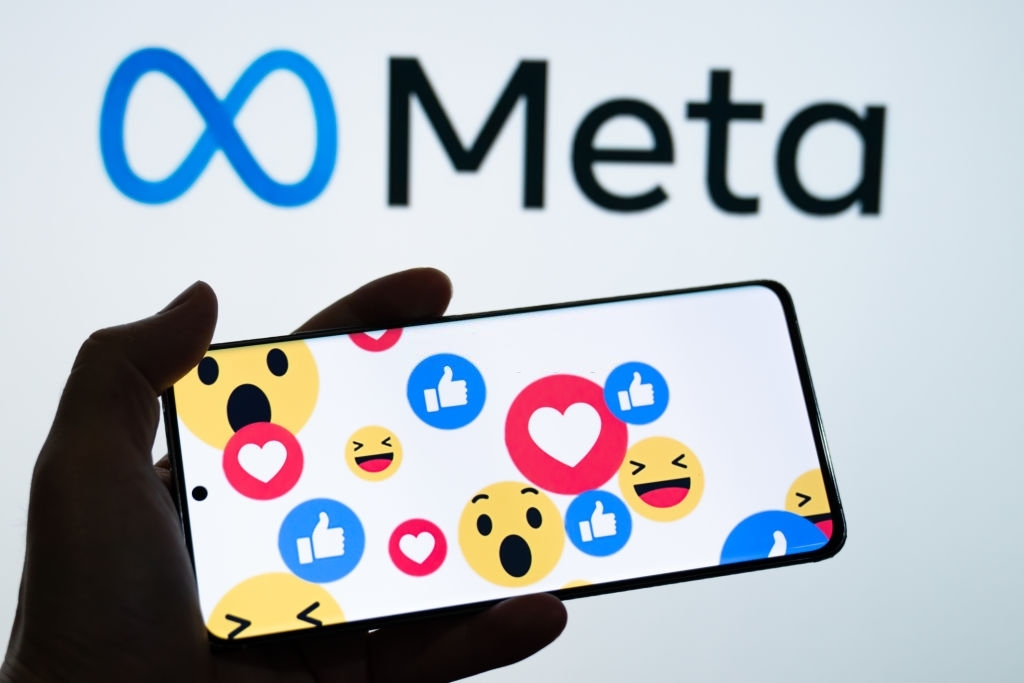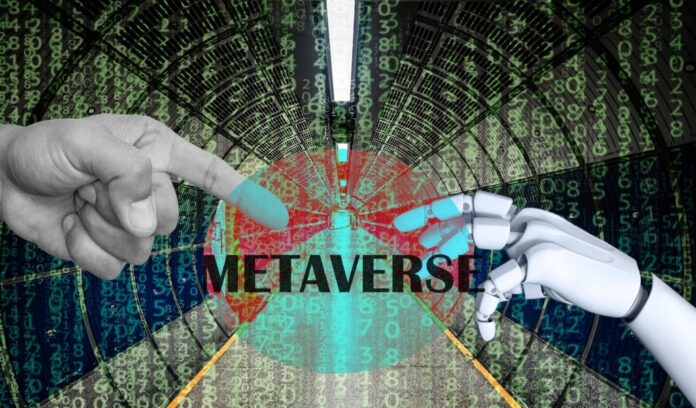Metaverse is a decentralized open platform that enables users to create their own avatars, explore the world, be social online with friends, play games, meet strangers with similar interests, among many other things.
Imagine all these possibilities in a space where your data is completely private. Today’s internet consists of centralized apps and servers that often share or sell your data to outside entities without your consent. Imagine what life could be like if you had more control over your personal data.
Metaverse is the idea that the two most significant infrastructures of the information age – the digital and the real world- can be seamlessly bridged in many ways to provide services that are analogous to the “real” world.
Thankfully, there is no need to wait for science fiction ideas like flying cars or holograms to come true in order to live in this exciting new world with web programs like Torley Linden’s Second Life. This is what sets Metaverse apart from virtual reality: it blurs the lines between reality and bits so you can experience both online and in person. It’s not about filtering out one dimension but rather letting us intersect with both dimensions simultaneously.
Metaverse Is Not A Single Product
The real question is when will VR actually be good enough to use for more than a few hours at a time? When will the average person start caring about digital goods?
And when will computers become powerful enough to finally create a persistent virtual world?
These are tough questions, and it’s not as simple as just looking at a particular company’s roadmap like Facebook’s new ‘Meta’ thing and estimating when they will ship a specific product.
We’re talking about an era, so it’s best to think about the arrival of the metaverse in terms of a shift in behavior.
Just like the internet is not a single place, but instead a collection of websites, applications,
and services that work together, the metaverse just describes a collection of technologies,
business models, and interactions that will look very different from today’s internet. If we want to try and guess when the metaverse will arrive, we’ll need to pinpoint the moment at which the digital world becomes more meaningful to most people than the physical world. But if you look at how people interact with the digital world, it feels like the metaverse moment could be right around the corner. Our focus on the physical world has been declining for decades.
Work has moved from conference rooms to video calls. Friendships are increasingly formed online through Twitter and Discord communities. And video games are quickly replacing sports as the dominant competitive activity.
Metaverse Is An Era
The metaverse will be bigger than anyone company and Zuckerberg recognizes this. We’re talking about an entirely new computing era here, not just a particular product or service. Making the metaverse a reality will require a collection of technological advances. Virtual reality and augmented reality have to get better, systems and networks need to start talking to one another, and the internet clearly needs to get faster. But all of that is possible. We’re not talking about crazy brain computing interfaces here like Elon Musk’s Neuralink or plugging into something that perfectly recreates The Matrix.
Do We Have Enough Hardware For A Metaverse?
Let’s take a minute to focus on just the hardware requirements of the Metaverse.
Eventually, there will be lots of different ways to interface with virtual environments, but I still think virtual reality headsets are absolutely critical here. From a casual observer’s perspective,

It can look like VR development has really stalled out over the past few years. In 2012,
Everyone in tech is obsessed over the original Oculus Rift. Palmer Luckey was the perfect founder and quickly became the poster boy for VR, all while releasing dramatic improvements at a breakneck pace.
The Varjo XR-3 is a great example of what’s possible in VR when money isn’t an issue. The headset costs six thousand dollars upfront and requires a fifteen hundred dollar per year subscription on top of that. It’s not made with average consumers in mind, but it’s a great demonstration of where this technology is going.
The first consumer Oculus launched in 2016 and has a resolution of a little over one megapixel per eye, which wasn’t terrible, but it led to some clearly noticeable pixelation.
The Oculus Quest 2, which came out last year, serves up about three and a half megapixels per eye, which is roughly equivalent to 4K, but even that isn’t enough for true immersion. The Varjo XR-3 pushes well beyond this though, by using multiple screens stacked on top of each other to deliver more than 11 megapixels per eye. These aren’t perfect apples-to-apples comparisons, since there are tons of other factors that go into making a VR experience feel truly immersive, but it’s a solid step forward.
The display of the second Hololens from Microsoft covers only 52 degrees, and Snap’s new AR glasses are only 26 degrees. This Varjo headset delivers 115 degrees of view, meaning you can see more of your surroundings in your peripheral vision, which is key to immersion.
Obviously the average consumer isn’t going to spend thousands of dollars on a VR headset anytime soon, but this tech will get cheaper, and when it does, we should see adoption start to climb. There are also a host of other technologies that need to improve before the metaverse really starts pulling people in.
There are so many different products and companies gradually improving technology and increasing immersiveness, but it might only be clear in retrospect what the key ingredients were. Even still, I think there are some interesting comparisons we can make to try and project metaverse adoption.
The first is VR headsets. This year, we should see about 6 million new sales, which will bring the total number of headsets out in the world to 16 million units. That’s still incredibly low, remember, there are billions of internet users. But the growth is high at 60% per year, and if it continues, we could see one billion headsets in circulation by 2030.
Blockchain metaverse
What is the relationship between the metaverse and blockchain technology? At first sight, it’s quite a lot… Interoperability and security are essential.
For example, Fortnite has sold more than $1 billion worth of digital goods. Weapons, upgrades, skins, and so on have been sold in vast quantities. Fortnite has established a whole new digital economy, which is fantastic. Except that everything is reliant on a single centralized firm since the game will shut down players’ accounts and lose all of their items.
The good news is that blockchain technology solves this.

If you own your things as NFTs on Ethereum, you can maintain all of your purchases even if Fortnite shuts down. You may also trade goods using decentralized marketplaces or sell items that you don’t want for crypto. There are several advantages to putting objects on the blockchain that in five or ten years, every game will be doing it.
While that’s going to be a massive improvement for gamers, the blockchain Metaverse isn’t just limited to entertainment. Digital land is another popular part of this growing ecosystem. That’s especially the case for Decentraland, where a piece of property just sold for a record price of $913,000.
crypto will likely play a big role in the metaverse long-term. Metamask is the fastest-growing ethereum wallet and a critical part of the defi ecosystem.
There are millions of people who want nothing to do with Zuckerberg’s metaverse and will only accept a decentralized option. Metamask usage is a good proxy for the size of this audience,
and it’s growing even faster than VR. The wallet had half a million users in July of 2020 and just crossed 10 million users in August of 2021.
That works out to an insane 20x annual growth rate, which is clearly unsustainable, but it doesn’t seem crazy to think that we could see close to a billion cryptocurrency users by the end of the decade. There are already 100 million bitcoin users after all.
The play-to-earn blockchain game concept started to boom this year with the massive adaptation in the NFT concept last year along with the Defi (decentralized finance) systems. But the NFT and metaverse concepts were popular so early in the blockchain space. There are some cool and promising blockchain metaverse games and other projects that are worth looking at.
Facebook Metaverse
wouldn’t it be awesome if you could just knock out this monster in a semi-real semi-virtual world

and just moments after you could explore such impressive ancient places? Facebook promises that you will be able to do just that in 5 to 10 years in its so-called metaverse.
Whether this is just another ploy to get money from you and if it’s technically possible at all is what we’ll be explaining now.
dancing at a live concert virtually or digitally meeting friends who live on the other side of the world at a party, and perhaps just casually meeting up with some celebrity and joining them for s drink. Wouldn’t that be awesome?
These are all facebook’s visions for a metaverse that is supposed to grow step by step. How seriously facebook takes this all can be seen by its recent change of name into Meta.
In the next, five to ten years Mark Zuckerberg wants to establish this as part of the mainstream. So far virtual reality is mostly used by gamers and geeks and only those that can afford it.
You’ll probably know some of the precursors to metaverse the online platform second life where you can live a whole other life. Pokemon go which was a huge hit a couple of years ago and which also received an augmented reality mode upgrade to the PlayStation.
But the Meta wants to go even further. So far all there is are nice computer animations for advertising. but the company isn’t starting from scratch.
In 2014 it took over the VR goggles producer oculus, and most recently the augmented reality goggles ray ban stories were released.
There’s already the virtual world Horizon. It consists of a horizon home, a virtual living room that lets you invite online friends. It also includes horizon workrooms a VR surrounding for business
Meetings.
However, it’s not very refined yet and has received a lot of negative online reviews.
Likewise, other companies are also looking into the possibility of creating a type of meta-worse. Like Nvidia with its real-time simulator omniverse which lets graphic designers work together virtually or the online games pad from Roblox which lets users create their own computer games to play with others.
The video game developer Epic Games is also working on its own metaverse idea in order to combine its maker hit Fortnite with other franchise universes like marvel.
So much for the plans to create a type of metaverse and yes it all looks great but how is it supposed to work technically?
Mark Zuckerberg has not said a word on how much data this project is going to consume. Chip manufacturer Qualcomm expects a live virtual reality environment to need around 200 megabytes per second.
This would be almost impossible with a 4g internet connection that often has download speeds of around 30 megabytes per second.
Instead, you’d need the latest mobile communication standard 5g but it will take some time until this network has been fully developed across the globe. Speaking of computing power today even the most powerful stationary computers will be unable to cope with these apps.
You will definitely need brand new and expensive VR or AR goggles in order to experience this.
Zuckerberg is aiming to deploy $180 billion dollars over the next 10 years on the initiative, so he’s obviously going to have some sort of impact. For reference, a senior Apple executive said that they spent only $150 million to develop the original iPhone. $180 billion is a staggering amount of money. Truly unprecedented in the tech industry. If Meta winds up spreading that evenly over the next 10 years, they will be spending fifty times as much money as the entire Roblox team, every single year.
Zuckerberg clearly thinks he can have a meaningful impact in the next 10 years and has reconfigured his entire business to make something happen. We still don’t know exactly what the next decade will have in store for the metaverse, but you can be sure that some interesting things will happen here.

